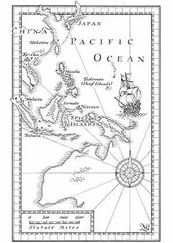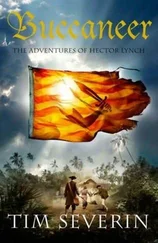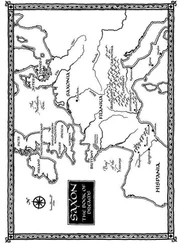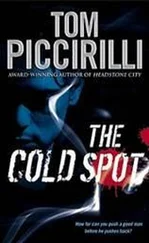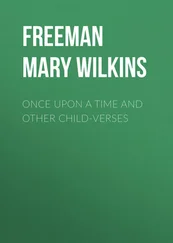Thorir's merchant ship was not one of the longships which have entered the sinister folklore of sheltered priests. The longships are warships, expensive to build, not particularly seaworthy and unsuitable for trading. At twenty paces' length, a longship offers barely four or five paces in the beam and, being like a shallow dish amidships, has little room for cargo. Worse, from a merchant's point of view, she needs a large crew to handle her under oars and even when she is sailing — which is how any sensible mariner makes progress - a longship must have a lively crew because these vessels have a treacherous habit of suddenly running themselves under or capsizing when under press of sail. Nor was Thorir's vessel one of those dumpy little coasters that farmers use when they creep round the Icelandic shore in fair weather, or to go out to the islands where they graze their sheep and cattle. His ship was a knorr, a well-found, full-bellied ship which is the most advanced of our deep-sea trading designs. She can carry a dozen cattle in pens in the central hold, has a single mast rigged with a broad rectangular sail of wadmal, and can cross from Iceland to Greenland in six dogur — a day's sailing — the standard length by which such voyages are calculated (Adam in Bremen might have difficulty in translating that distance onto a map, if that is what he proposes to do). Her chief cargo on that particular voyage was not cattle, but Norwegian timber. And that cargo of timber was about to save our lives.
Any sensible person who embarks on the voyage from Iceland to Greenland keeps the fate of the second settlement fleet in mind. Seventeen ships set out, nearly all of them knorrs. Less than half the ships managed to reach their destination. The others were either beaten back by adverse winds and limped into Iceland, or were simply lost at sea and no one ever heard of them again. As an experienced mariner, Thorir knew the risks better than most. The open water between Iceland and Greenland can be horrendous in bad weather, when a fierce gale from the south kicks up mountainous seas over the current that runs against it. Even the stoutest vessel can be overwhelmed in these conditions, and although the knorr is the most seaworthy ship that floats, she is just as much a plaything of the elements as any other vessel. Caught in heavy weather, a knorr has a fair chance of survival, but the crew must forget any idea of keeping a course. They spend their time frantically baling out the water that breaks aboard the ship, stopping leaks in the hull if they can, and preventing the cargo from being tossed about and bursting the planks, while the helmsmen struggle to keep the vessel at the safest angle to the advancing waves. If a storm continues for three or four days, the ship is often blown so far off course that no one has any idea of where they are, and it is a matter of guessing the most likely direction of land, then sailing there to try to identify the place.
Thorir had talked with men who had already sailed between Iceland and Greenland, so he knew the safest, shortest route. He had been advised to keep the tall white peak of Snaefellsjokul directly astern for as long as it was visible. If he was fortunate, he would see the high mountains of Greenland ahead before Snaefellsjokul had dipped below the horizon behind him. At worst he had only one or two days of open ocean between the landmarks until he had Greenland's huge white mass of ice in plain view and could steer larboard to skirt the southern tip of that huge and forbidding land. Then he planned to head north along the coast until he would arrive at Brattahlid, the centre of Greenland's most prosperous settlement and home of Erik the Red.
Thorir's knorr was well handled. She crossed the open straits and when she came in sight of Greenland's southern cape, it seemed that the ocean crossing had gone flawlessly. The vessel turned the southern cape and was heading for the fjord at Brattahlid, when as luck would have it she encountered a thick, clammy fog. Now a normal fog is associated with calm seas, perhaps a low swell. When the wind begins to blow, it clears away the fog. But a Greenland fog is different. Off Greenland there can be a dense fog and a full gale at the same time, and the fog stays impenetrable and dangerously confusing while the battering wind drives a vessel off course. This is what put paid to Thorir's ship. Running before the gale in bad visibility, trying to follow the coast, indeed almost within sight of Brattahlid if the weather had been kinder, the heavily laden knorr ran onto a reef with a crunching impact. She slid up on the rocks of a small skerry or chain of islands, the bottom tore out of her, and she was wrecked. Had the cargo been anything other than timber she would have filled and sunk. But the wedged mass of planks and logs turned her into a makeshift life raft. Her crew and passengers, sixteen including myself, were lucky to escape with their lives. As the waves eased, they scrambled up through the surf and spray and onto the skerry, with the shattered remnants of the knorr lurching and grinding on the rocks behind them until the tide dropped and the hulk lay stuck in an untidy heap. The castaways cautiously waded back aboard to retrieve planks and spars and enough wadmal to rig a scrap of tent. They collected some cooking utensils and food, and made a rough camp on a patch of windswept turf. With enough fresh water saved from the ship to last them several days, and a good chance of collecting rainfall later, they knew they would not die of thirst or hunger. But that was the limit of their hopes. They had been wrecked in one of the emptiest parts of the known world (indeed I wonder if Adam of Bremen knows about it at all) and their chances of rescue, as opposed to mere survival, were very bleak.
They were saved by a man's phenomenally keen eyesight.
Even now I can write this with a sense of pride because the man who possessed that remarkable eyesight was my father, Leif. I used to boast about it when I was a child, saying that I had inherited that gift of acute vision from him — as opposed to the second sight, which I possess through my mother and about which
I am far more reticent. But to explain how that remarkable rescue took place, I need to go back briefly to a voyage fourteen years earlier which had gone astray in another of those typical Greenland fog-cum-gales.
On that occasion a navigator named Bjarni Herjolfsson had overshot his destination at Brattahlid, and after several days in poor visibility and strong winds he was in that anxious condition the Norse sailors call hafvilla — he had lost his way at sea. When the fog lifted he saw a broad, rocky coastline ahead of him. It was well wooded but deserted and completely unfamiliar. Bjarni had kept track of his knorr's gyrations in the storm. He made a shrewd guess as to which way Greenland lay, put his ship about and after sailing along the unknown coast for several dogr eventually came back to Brattahlid, bringing news of those alluring woodlands. About the time my mother was thinking of sending me to my. father, Leif had decided to sail to that unknown land and explore. Believing in the sea tradition that a vessel which had already brought her crew safely home would do so again, he purchased Bjarni's ship for the voyage.
By a remarkable coincidence he was on his way back from that trip even as Thorir's knorr shattered on the skerry. He was at the helm, battling a headwind and steering so hard on the wind that one of his crew, drenched by the resulting spray, complained, 'Can't we steer more broad?' Leif was peering ahead for his first glimpse of the Greenland coastline. 'There's a current from the north setting us more southerly than I like,' he replied. 'We'll keep this course for a little longer. We can ease the sheets once we are closer to land.'
Some time later another crew member called out a warning that he could see skerries ahead. 'I know,' Leif replied, relying on that phenomenal eyesight. 'I've been watching them for a while now and there seems to be something on one of the islands.' The rest of his crew, who had been curled up on deck to keep out of the wind, scrambled to their feet and peered forward. They could see the low black humps of the islands, but no one else could make out the tiny dark patch that my father could already discern. It was the roof of our makeshift shelter. My father, as I have said, was a hard man to dissuade, and the crew knew better than to try to make him alter course. So the ship headed onwards towards the skerry, and half an hour later everyone aboard could make out the little band of castaways, standing up and waving scraps of cloth tied to sticks. To them it seemed a miracle, and if the story was not told to me hundreds of times when I was growing up in Brattahlid, I would scarcely believe the coincidence - a shipwreck in the path of a vessel commanded by a man with remarkable eyesight and sailing on a track not used for fourteen years. It was this good fortune which earned Leif his nickname 'Heppni', the 'Lucky', though it was really the sixteen castaways who were the lucky ones.
Читать дальше

